Summary about learning Tech Recruitment W1

On my journey to learn about Tech Recruitment.
I just read the Tech Talent Guide by Oyster and would love to write this summary post so that I can remember what I have read. Please access the link and read it if you can. This post is a short version.
This post is included:
- Challenges of Tech Recruitment and suggestion to overcome
- What Tech talent wants from companies
- How to attract and retrain talent

I. Challenges of Tech Recruitment
1. High demanding and low supply:
Tech appears in every aspect of our life from EduTech to FinTech.
"Companies want to recruit not only engineers but also beyond technical roles. Knowledge workers such as business analysts, project managers, and content marketers at tech companies are in increasingly high demand."
It is the most challenge of Tech Recruitment.
2. Slow or long hiring process:
It's great to always recruit the right people at the right time for the right job.
However, the longer your recruitment process lasts, the more time your top candidates have to accept offers from other companies.
Actively provide feedback and updates throughout the interviewing process to keep suitable candidates engaged.
Recruiters need to be active and work with stakeholders in order to provide feedback and keep candidates engage. Otherwise, it will surely make your hiring process ineffective.
3. The bar for hiring tech talent is increased
Companies want to hire candidates not only for their expertise but also for their willingness to learn new things every day because tech is changing significantly daily.
As the result, it is harder for bringing candidates who can match all expectations.
4. Tech Talent is expensive
Due to the highly demanding and low supply, tech talent is expensive and it's more expensive if companies want to hire the best tech talent.
Every company wants them.
While tech talent is motivated by more than money, a high salary is important.
So it's harder to attract Tech talent for start-up companies than for big companies due to the budget. It's a result of having a great team leader and a vision of products/ideas are always important to attract candidates for start-ups.
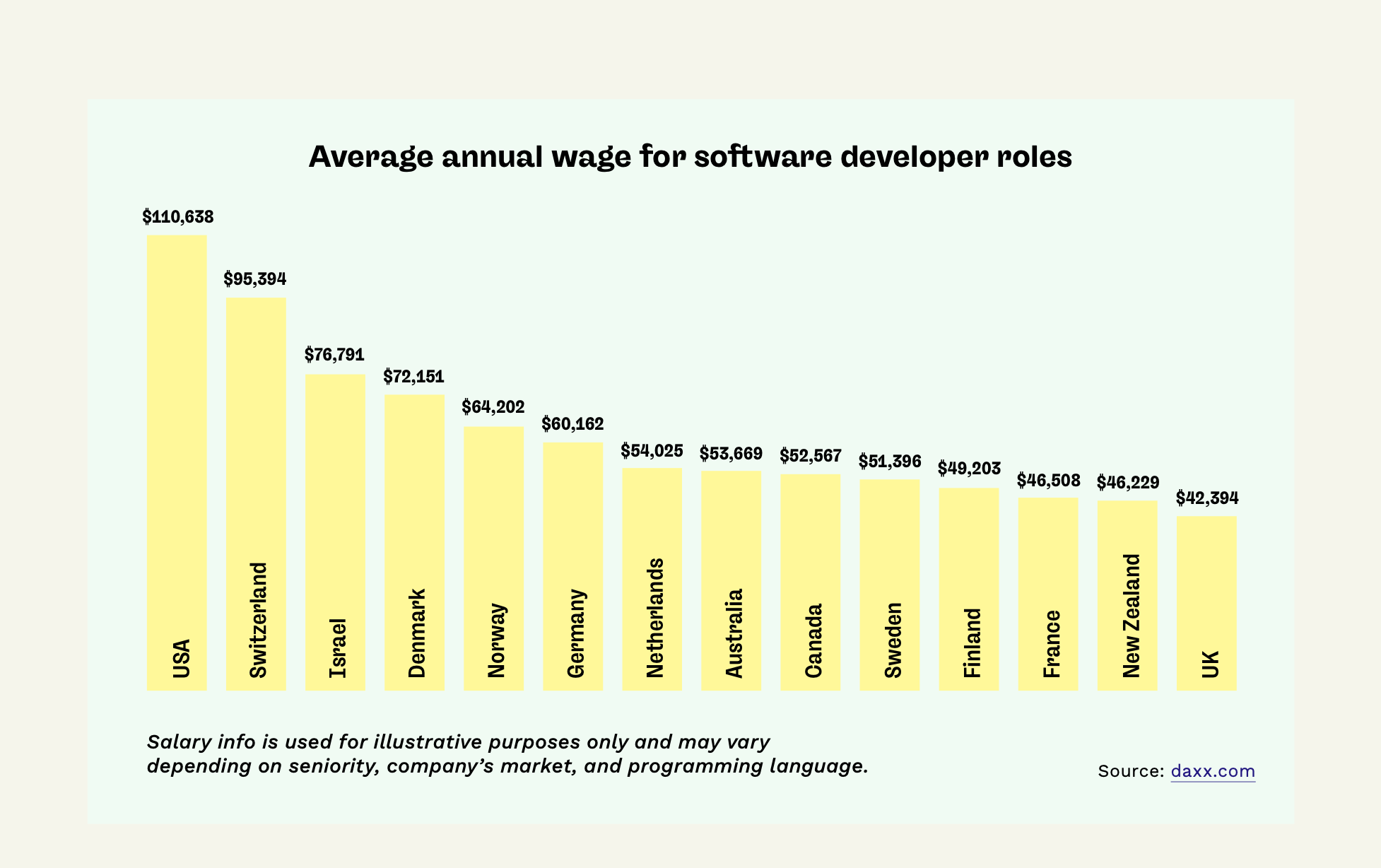
5. Location Limitations
Tech talent can be everywhere in the world so if companies can't have a distributed team, it would be a disadvantage in their hiring process. So remote work would be the solution for overcoming this challenge.
Remote work comes with its own set of challenges, such as time
zone differences, management, and monitoring issues, but technology is increasingly enabling communication, collaboration, relationship building, and knowledge sharing.
II. Understanding what tech talent want from companies.
- Money isn’t enough to keep tech workers motivated and engaged but transparency from leaders, room for growth, diversity and flexibility.
- Transparency
Glassdoor defines a transparent workplace as one that operates “in a way that creates openness between managers and employers.” Candidates can self-select more efficiently if you are open and honest about your company’s culture, priorities, and salary ranges in job postings.
Sharing and caring for a win-win situation is a must-have for attracting tech talent. Don't promise what you can offer and don't share anything you won't believe.
Brand image and public perception are important factors in attracting high-quality talent.
2. Room for growth
Tech Talent wants to advance in their careers. They want to work for a company that provides opportunities and challenges for learning and improving.
If the companies can't provide it, they will likely have low retention.
They also care about self-improvement, whether in the form of employee development or tuition reimbursement initiatives (which 32% say are most important) or health and wellness programs (topping the list for 30% of respondents). In-office perks, such as free snacks and beverages or the ability to bring their pets to work, are less important (cited by 12% and 8%, respectively), Accordingly an Indeed survey
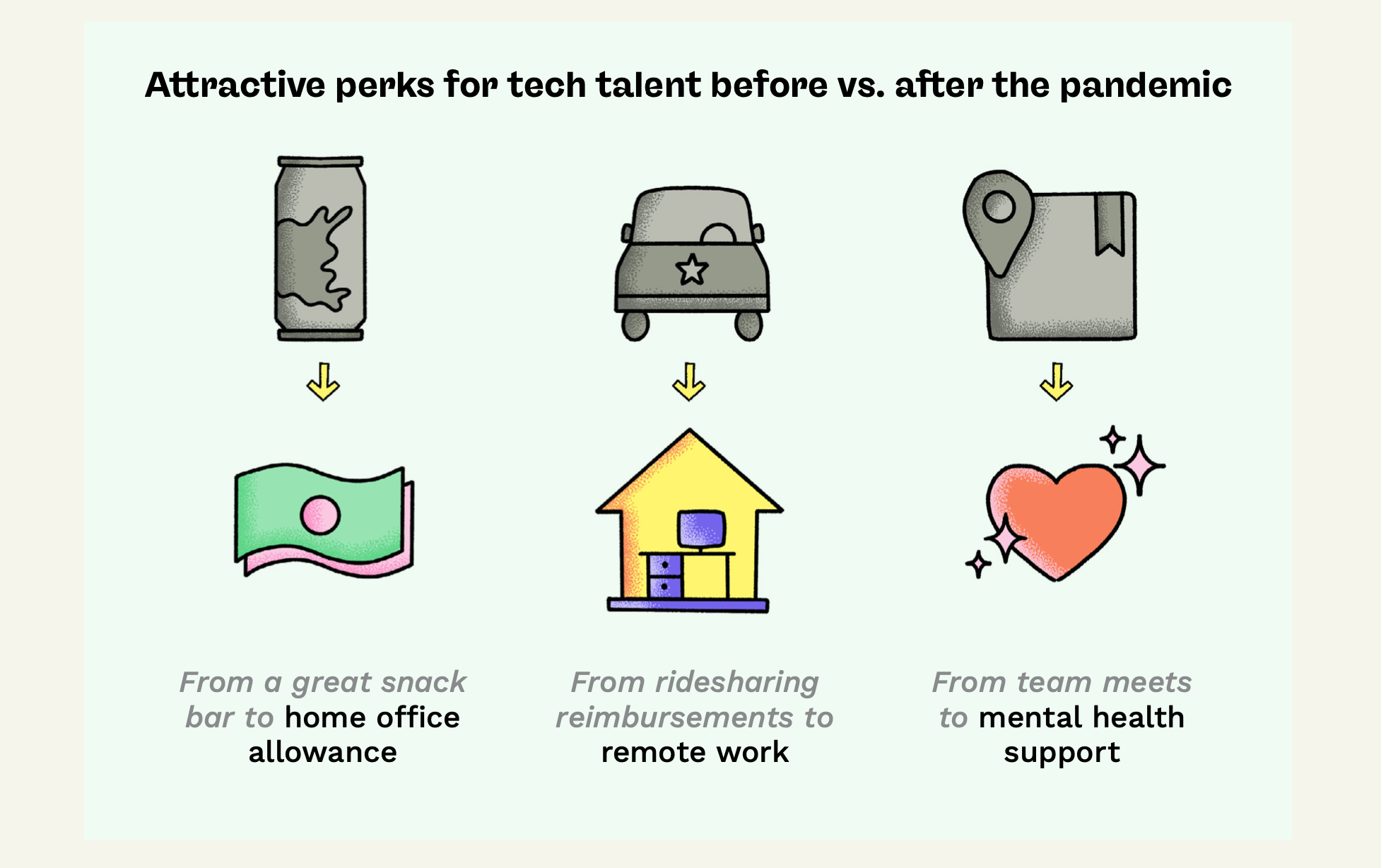
3. Diversity
There are numerous reasons to strive for a more diverse workforce, including that diversity aids the promotion of more varied ideas and increased innovation. But, most importantly, all businesses should keep at least one reason in mind: the bottom line. According to a McKinsey study, companies with ethnic and gender diversity in their workforce are more profitable than those without.
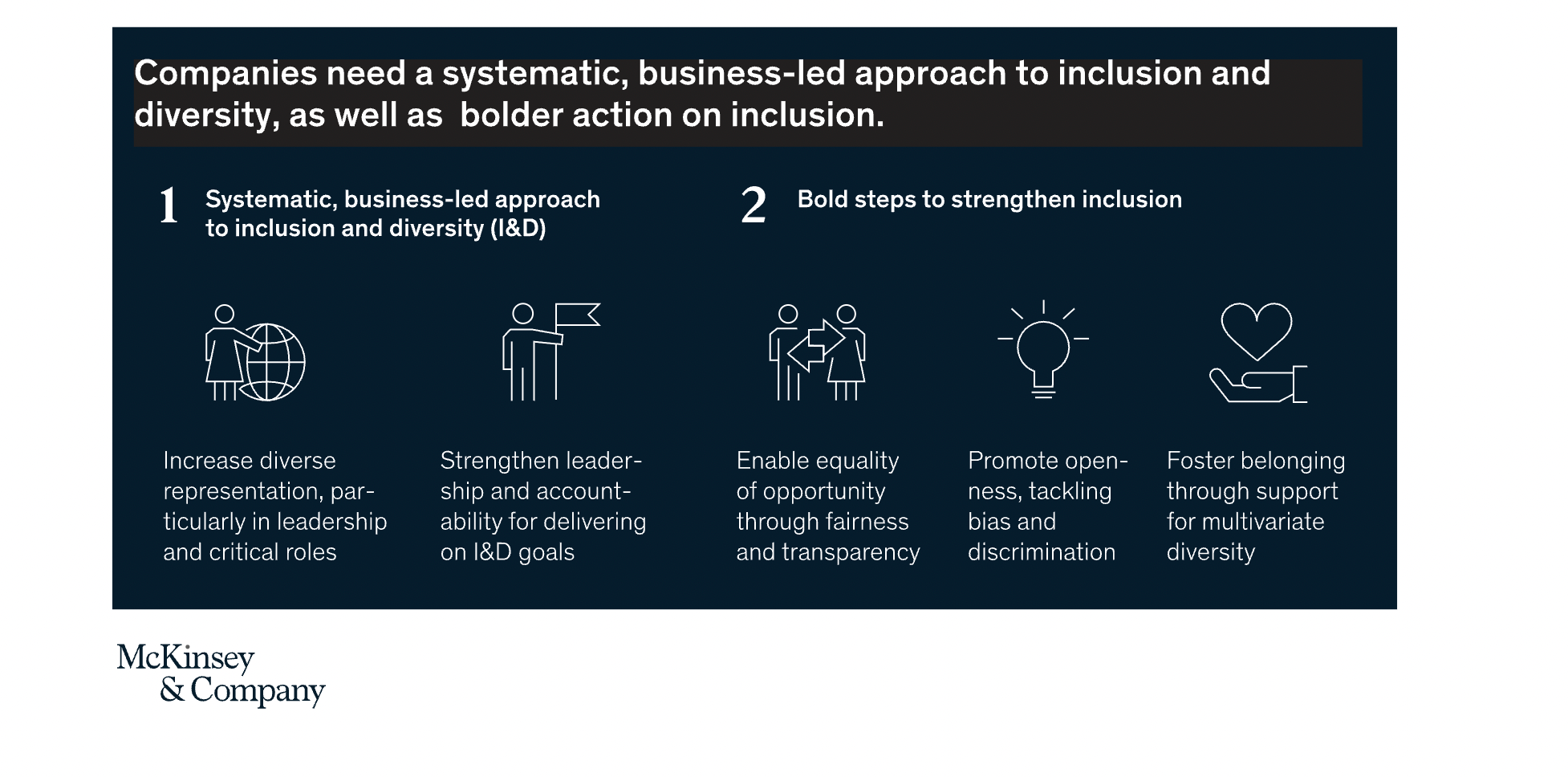
More importantly, according to a Glassdoor survey, more than 3 out of 4 job seekers and employees (76%) said a diverse workforce is important when evaluating companies and job offers.
4. Flexibility
Allowing employees to be more flexible at work makes it easier for them to balance various aspects of their lives, such as caring for children and aging parents and taking care of themselves. And because flexibility tends to lead to increased productivity, it’s a win-win situation.
When evaluating a new position, pay is still what matters most, cited by almost all respondents (93%). But a number of factors follow right behind: flexibility in hours and location (chosen by 92%); the opportunity for career advancement (deemed important by 91%); opportunities for learning and education (selected by 91%); and whether the company has a reputation for ethical behavior (selected by 90%), according to an Indeed survey

5. Quality Tech Tool
To help your employees be more productive, provide an allowance for remote office setups, laptops, webcams, noise-canceling headphones, and whatever other basics their jobs demand. The workplace has changed, and your employee benefits should be changing too.
6. Remote support
Human beings are social creatures. They need to belong to communities whether in the workplace or in life generally.
Due to covid-19, companies need to care for their employee's mental health more than ever. Employers must develop innovative, thoughtful ways to keep individual team members healthy, such as a therapy allowance or virtual team socials. Whatever you come up with, keep in mind that tech talent expects you to replicate the same sense of community they experienced in physical offices in virtual environments.
III. How to attract and retrain tech talent
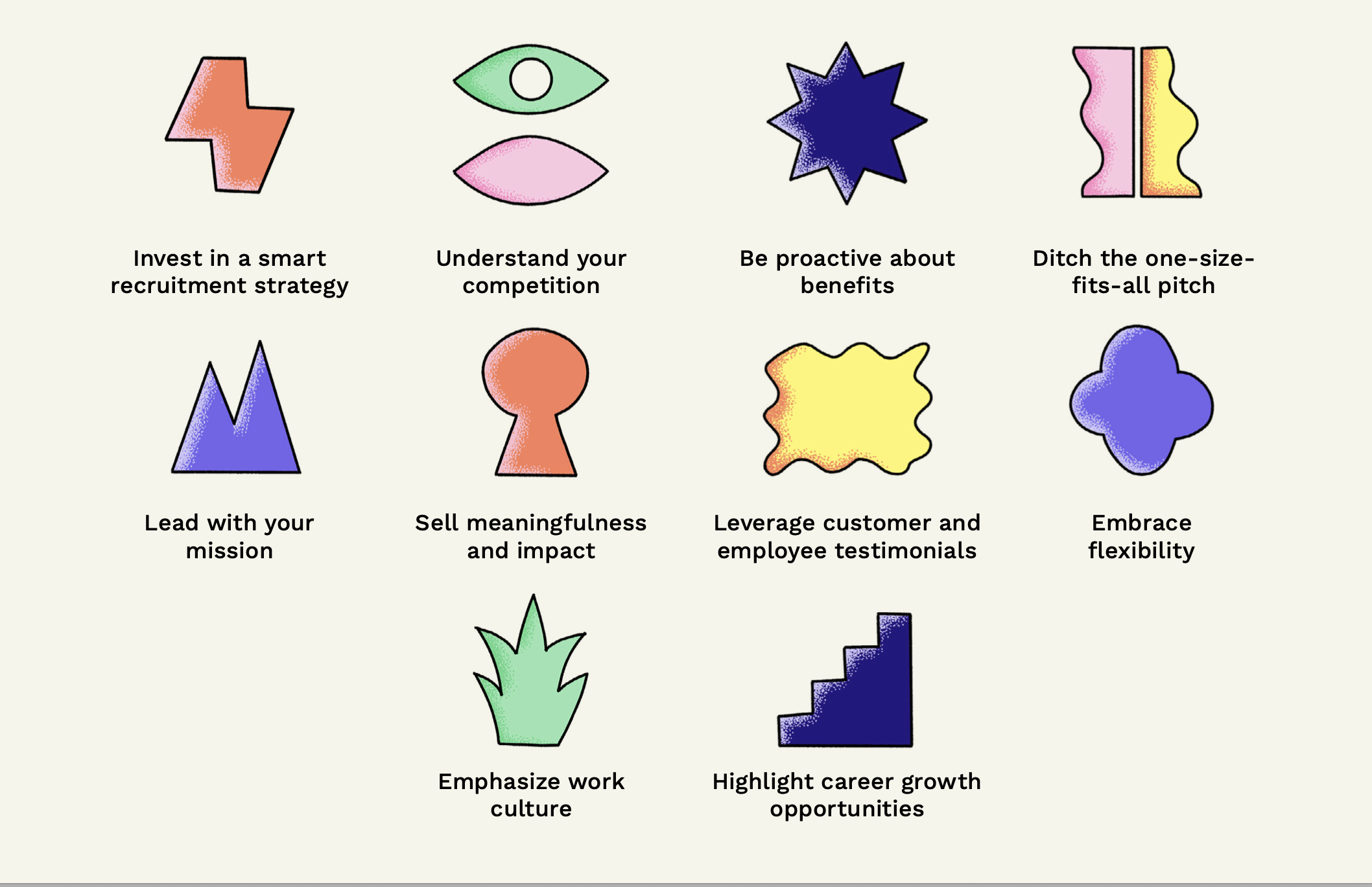
- Invest in a smart recruitment strategy
Think outsite of the box when posting JD, finding or sourcing candidates.
Each role has different method for approaching candidates. As a recruiter, You can't post the JD and wait for applications. Be active.
Using more technology in order to do the job as a recruiter. We can use ATS to track and manage the whole hiring process.
Using agenies that promote remote work and help find out great candidates from all over the world.
2. Understand your company and competitors.
It is very competitive when working in tech recruitment and if we dont know what we have and what we don't, it would be so much difficult to attract candidates.
For example, when you don't have the high budget like big companies, you would think about your advantage as small companies or startup like:
- Remote working culture with distributed teams all over the world.
- Share company's vision by story telling/video instead of sending a long pdf file about your company instruction.
- Let hiring managers involved in the hiring process from begining. Most of candidates love it because they can evaluate the hiring managers's value as well as engage more with your hiring process.
- Understand what your competitor don't have but you can offfer to candidates: the team leaders's story, working culture.
- Be a knowlegetable recruiter that can share about your company industry and most importantly understand the roles/profiles that you have been working on. Noboday wants to talk to you if you don't know what you offer/sell to them.
- Make the hiring process faster and actively provide feedback to candidates after the interview
- Build the diversity and inclusive culture where employees can bring their own self to a workplace.
- Make learning and development as a mindset
- Build the culture that cares about people! people first.
3. Be proactive about benefit
It's a new culture of working after covid-19. Job seekers care about what you can support them when working from everywhere. Can they?
Consider remote learning, personal development programs, parental support services, and home office stipends to supplement in-office benefits.
4. Lead with your mission
A-players want to work in an environment where they can be surrounded by talent and learn daily. People today also want to be a part of a bigger picture; they need a job that makes sense in today’s world and aligns with their values.
When approaching the suitable candidates, share to them how their work can affect and make the world becomes better place for [Whom] by doing [what].
Share the mission of your company and how they can do to help it and by doing it that they can being a part of this mission.
Concentrate on communicating your brand’s “why”—the reasons you believe in and fight for the company’s mission daily. If you have a genuine passion for what you do, you will attract true team members rather than just “employees.”
5. Share "scene" of your employees and customer life
Publish and promote customers’ and employees’ stories about how they find meaning in their work—in their own words. These are highly influential and contribute to a positive public perception of your company. It also creates interest in your brand even before you start recruiting.
6. Embrace flexibility
Create flexible work schedules, and embrace the informality (and demands) of working from home.
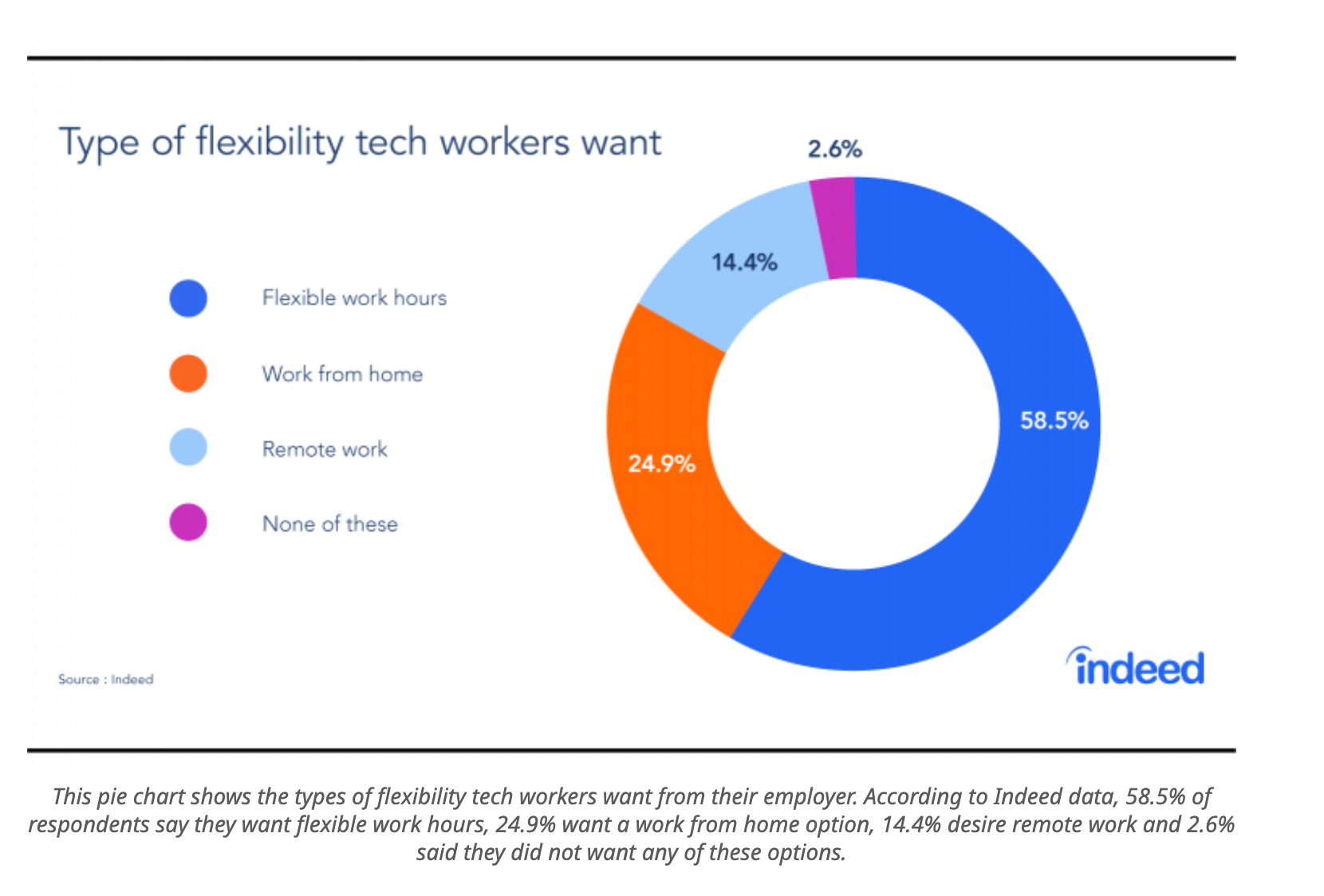
7. Highlight career growth opportunities
Tech talent wants to learn and advance career in the long term, so companies that provide and let them see how far they can go with the company not only can attract but also can retain them.
Helping employees develop and grow keeps them on the job longer and strengthens the company’s human capital and intellectual property.
Remember, your company is only as good as its workforce.
III. How and where to find Tech talent?
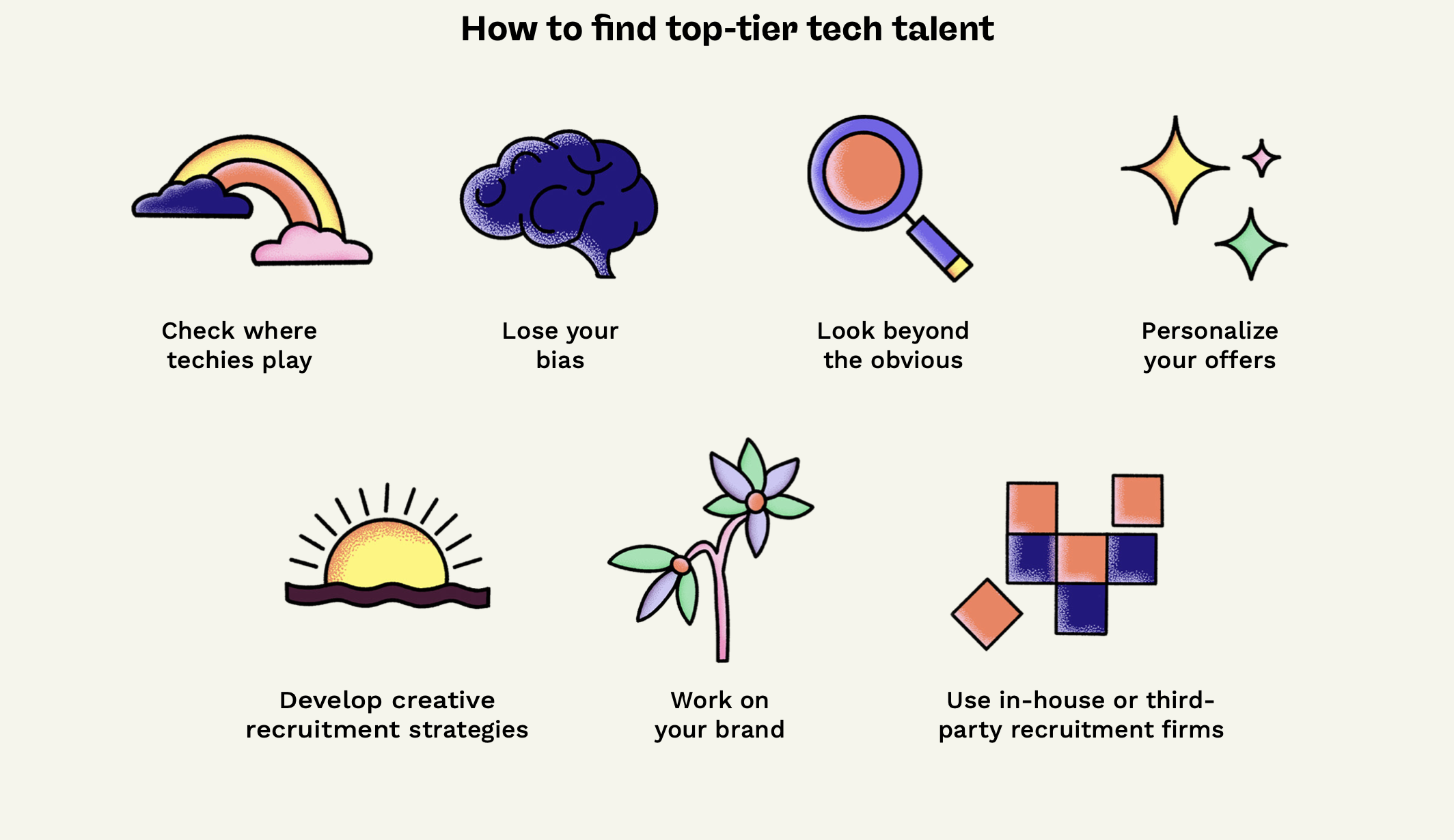
- Check where techies play
- Dig deeper where tech talent spends time like b LinkedIn Groups, technical help forums, GitHub, StackOverflow, RevGenius, Pavilion, Dribble, Behance, and other online communities.
- Posting high quality content via social media to increase your brand’s visibility that will help you attract and hire tech candidates while also strengtheningour brand image. Posting high-quality content can help you build brand awareness and identity, as well as improve your hiring reputation.
- Attend or organize in-person or virtual industry networking events. Get to know the attendees, learn about their interests, and see if they’re interested in new opportunities.
2. Lose your bias.
- Learn more about bias in the hiring process and try to use ATS system and have an open mindset when screening, interviewing candidates durting the hiring process.
- Provide training for hiring managers and recruiters to improve their skills in evaluating the candidates's expertise.
- Have a clear picture of candidates persona for each of role.
- Have effective internal communication between hiring managers and recruiters.
3. Look beyond the obvious
- Contact with learning centers that provide courses for developers.
- Take advantage of international talent pool by promoting remote working curlture
- Use agencies that provide a diversity of talent pool.
4. Develop creative recruitment strategy
like host coding challenges and workshops, hackathons, bootcamps, and tech meetups.
5. Work on your brand
whether online or offline by providing the value to communities.
- Be a sponsor for events: "Sponsoring an event can help you get your name out there and into the minds of the people who will be there."
- Provide training/tech talk for students in universities.
Thanks for your reading.
Just keep learning!
Thao.


